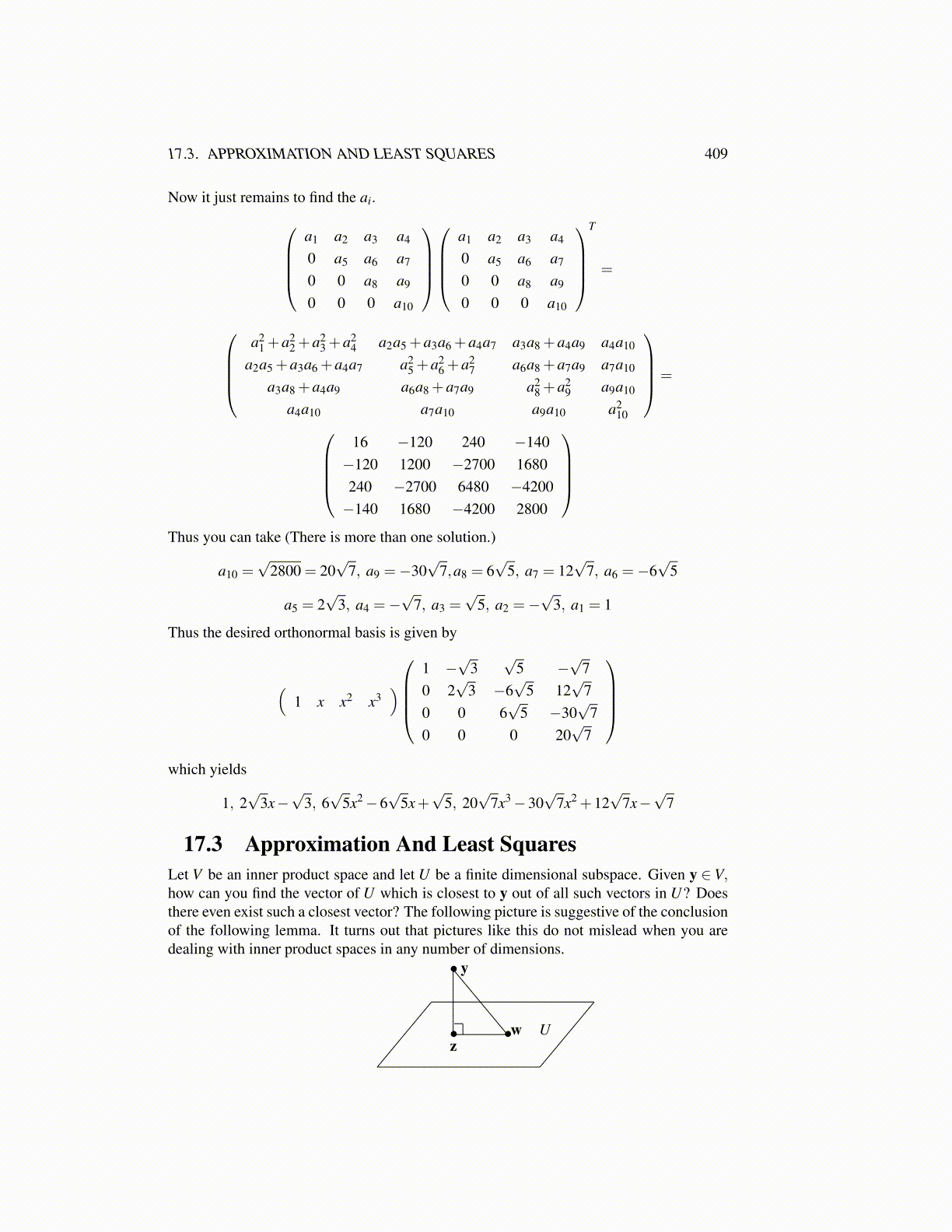
17.3. APPROXIMATION AND LEAST SQUARES 409
Now it just remains to find the ai.a1 a2 a3 a4
0 a5 a6 a7
0 0 a8 a9
0 0 0 a10
a1 a2 a3 a4
0 a5 a6 a7
0 0 a8 a9
0 0 0 a10
T
=
a2
1 +a22 +a2
3 +a24 a2a5 +a3a6 +a4a7 a3a8 +a4a9 a4a10
a2a5 +a3a6 +a4a7 a25 +a2
6 +a27 a6a8 +a7a9 a7a10
a3a8 +a4a9 a6a8 +a7a9 a28 +a2
9 a9a10
a4a10 a7a10 a9a10 a210
=
16 −120 240 −140−120 1200 −2700 1680240 −2700 6480 −4200−140 1680 −4200 2800
Thus you can take (There is more than one solution.)
a10 =√
2800 = 20√
7, a9 =−30√
7,a8 = 6√
5, a7 = 12√
7, a6 =−6√
5
a5 = 2√
3, a4 =−√
7, a3 =√
5, a2 =−√
3, a1 = 1
Thus the desired orthonormal basis is given by
(1 x x2 x3
)1 −
√3
√5 −
√7
0 2√
3 −6√
5 12√
70 0 6
√5 −30
√7
0 0 0 20√
7
which yields
1, 2√
3x−√
3, 6√
5x2−6√
5x+√
5, 20√
7x3−30√
7x2 +12√
7x−√
7
17.3 Approximation And Least SquaresLet V be an inner product space and let U be a finite dimensional subspace. Given y ∈ V,how can you find the vector of U which is closest to y out of all such vectors in U? Doesthere even exist such a closest vector? The following picture is suggestive of the conclusionof the following lemma. It turns out that pictures like this do not mislead when you aredealing with inner product spaces in any number of dimensions.
•
• • Uw
y
z